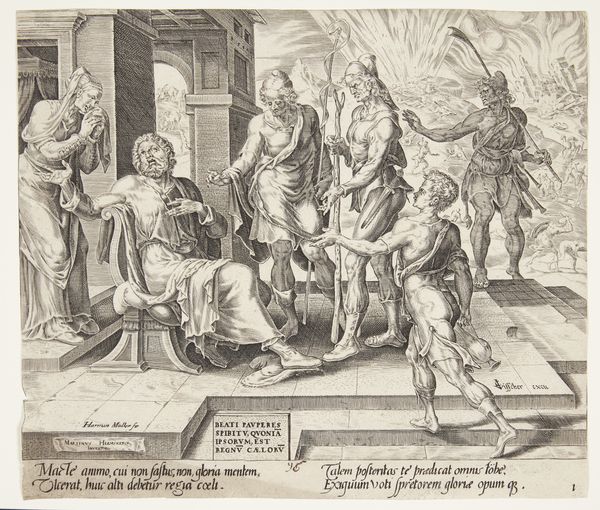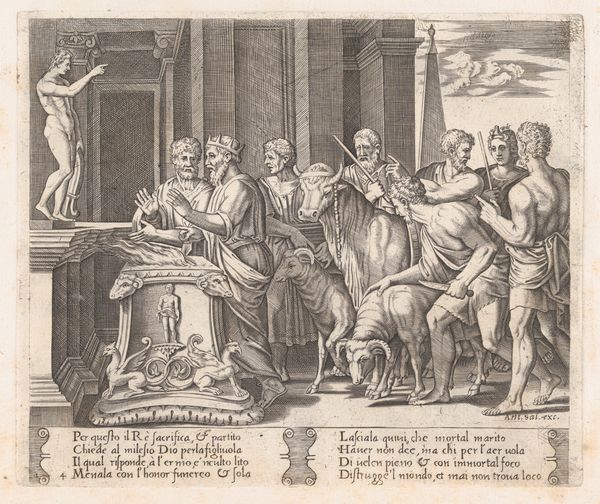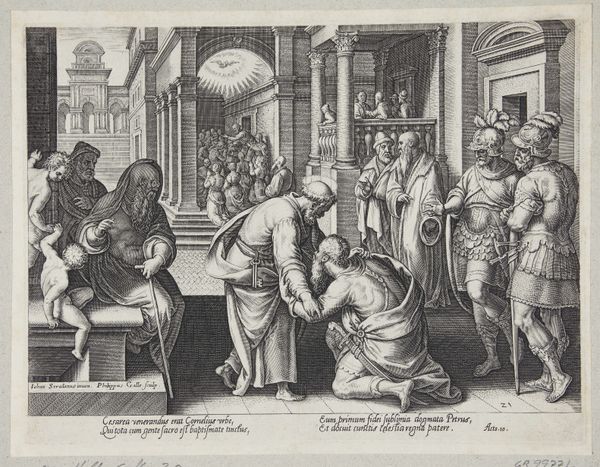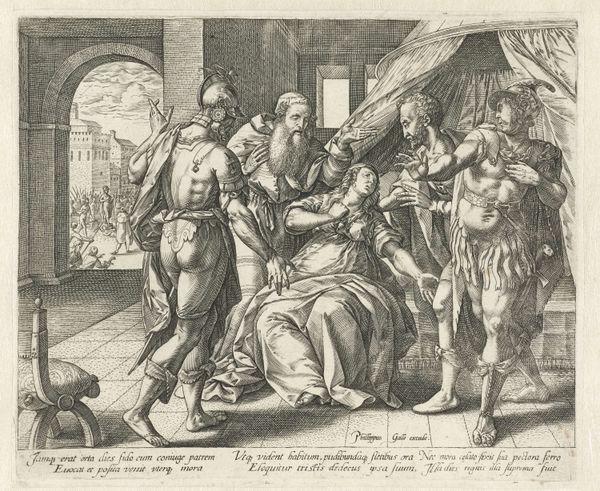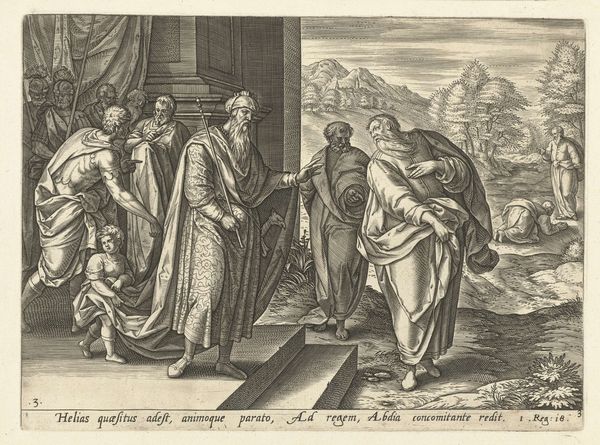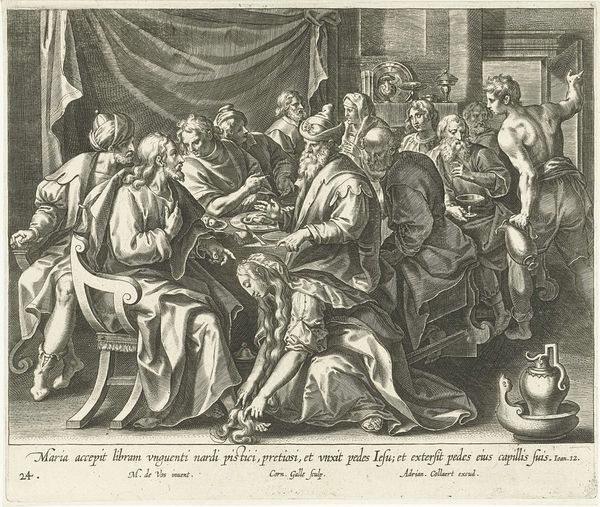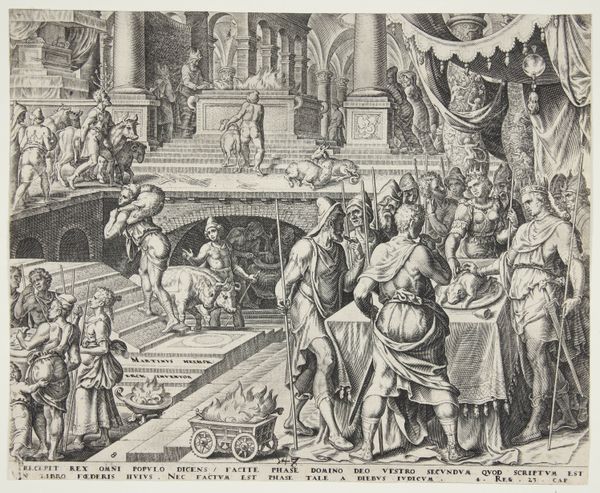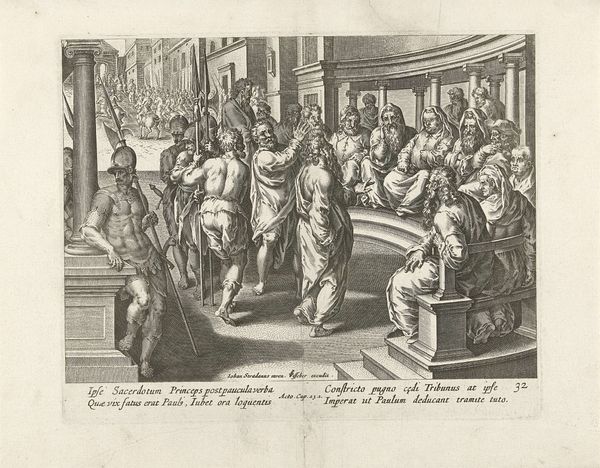
"Salige er de fattige i ånden. Job modtager de dårlige tidender om sin ulykke" 17th century
0:00
0:00
print, engraving
#
allegory
#
baroque
# print
#
portrait drawing
#
history-painting
#
engraving
Dimensions: 212 mm (height) x 243 mm (width) (bladmaal)
Editor: This is an engraving from the 17th century by Harmen Jansz. Muller, titled "Salige er de fattige i ånden. Job modtager de dårlige tidender om sin ulykke" which translates roughly to "Blessed are the poor in spirit. Job receives the bad tidings of his misfortune". It’s pretty dense with figures and dramatic imagery, and it feels very theatrical to me. What do you see in this piece? Curator: It's powerful, isn't it? I see a visual representation of systemic injustice. Job, in his material loss, embodies the precarity faced by so many throughout history and even today. Notice how the messengers, bearing news of catastrophe, are rendered with a physical power in stark contrast to Job's seated vulnerability. Editor: That contrast is very evident. It almost looks like they represent different aspects of power: physical versus…moral, maybe? Curator: Precisely. And who controls the narrative? Who gets to define what constitutes "misfortune" and how it should be borne? This work pushes us to examine the social constructs around suffering, class, and who is deemed worthy of sympathy. Is Job’s piety the only thing saving him from ruin? Or does he fall prey to ruin nonetheless? How does this scene play into early modern ideas of piety and divine order? Editor: So you’re suggesting the image is not just a story of personal faith, but also a critique of societal power structures? Curator: Absolutely. It prompts us to consider the historical context, to question whose voices are amplified and whose are silenced when we discuss concepts like poverty, misfortune, and even faith itself. Muller offers us an entry point for engaging critical conversations. Editor: I see it now. I initially viewed it as just a biblical scene, but understanding the power dynamics makes it so much more relevant. Curator: It reminds us that art is rarely just a passive reflection, it can also be an active intervention in shaping our understanding of the world.
Comments
No comments
Be the first to comment and join the conversation on the ultimate creative platform.
